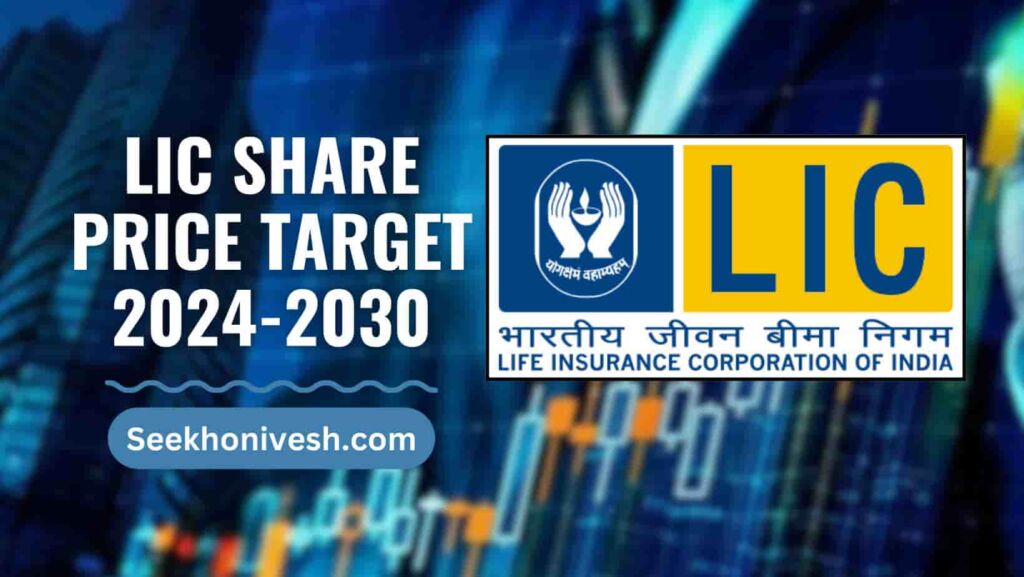Life Insurance Corporation of India (LIC), the crown jewel of India’s insurance sector, boasting a massive market share of more than 60%.
The company went public in 2022 through an IPO that was oversubscribed nearly 3 times.
However, the shares have underperformed since listing due to high volatility in markets and geo-political tensions.
At the time of writing, LIC share price stands at Rs . The company has strong fundamentals but faces challenges like
- losing market share to private players,
- requirement to meet high growth targets to justify its valuation, and
- evolving from a tax saving instrument focused company to a protection and retirement planning focused company.
LIC Share Fundamental Analysis
LIC has over 60% market share in the highly underpenetrated Indian insurance market. The new business premium grew at 17% CAGR in last 5 years.

Renewal premium contributes over 85% to totals premiums indicating stability. The company has over 15 lakh agents, largest in India, giving strong distribution reach.
Solvency ratio of over 1.5 indicates capital adequacy to grow business.
Profitability has been under pressure due to change in surplus distribution norms but is likely to improve with rising VNB margins.
The company has high quality debt investments currently valued at discounts to market price indicating potential for revaluation gains.
Also Read: IREDA Share Price Target 2024, 2025, 2026, Full Analysis
SWOT Analysis
Strengths: LIC enjoys a strong brand reputation, extensive distribution network, large policyholder base, and robust solvency ratios. Its diverse product portfolio caters to various customer segments, offering protection, savings, and investment solutions.
Weaknesses: Dependence on traditional products, high operating costs, and a complex legacy system hinder efficiency. LIC faces stiff competition from private players offering innovative products and superior customer service.
Opportunities: Expanding into niche segments like micro-insurance and health insurance, leveraging digital platforms to improve customer experience, and exploring strategic partnerships can accelerate growth.
Threats: Rising interest rates, economic slowdown, and regulatory changes can impact LIC’s profitability and market share. Additionally, competition from private players and new-age InsurTech companies is intensifying.
Promoter Holding Changes
Indian Government holds ~96% stake in LIC as a promoter. No changes in holding pattern are expected in the medium term. The Government aims to keep at least 75% stake as per the LIC Act 1956. However, divestment plans remain under discussion, which could impact the share price in the future.
Growth Drivers
- Underpenetrated Indian insurance market, growing at 17-20% per annum
- Huge customer base yet to be tapped for life insurance products
- Expanding agency force and partnerships to improve penetration
- Launch of new products like ULIPs, savings plans to cater to changing consumer needs
- Improving digital capabilities to provide online products and enhance customer experience
See also: INOX India Share Price Target 2024, 2025, 2026, 2027, 2028
LIC Share Price Targets
Predicting future share prices with certainty is impossible. However, based on the growth prospects and applying a P/EV ratio of 1-1.5x, here are the share price targets for LIC:
- 2025 Target: Rs 900-950 (10-15% CAGR growth from current price)
- 2026 Target: Rs 978-1050 (sustained growth momentum)
- 2027 Target: Rs 1110-1150 (continued market penetration)
- 2028 Target: Rs 1240-1350 (if shows significant growth)
- 2029 Target: Rs 1380-1500 (consolidation of market leadership)
- 2030 Target: Rs 1550-1700 (Mature Stage with stable growth and dividend payouts)
The targets indicate a CAGR of 15-20% in LIC share prices from current levels based on the expected high business growth.
However, these targets have an execution risk as the company needs to maintain market share, control costs and meet growth guidance consistently over the next 5-7 years.
Regular monitoring of premium growth, market share trends, product mix and claims ratio will be key metrics to track.
Disclaimer: This analysis is based on publicly available information and expert opinions. It is not intended as investment advice, and individual investors should conduct their due diligence before making any investment decisions.

